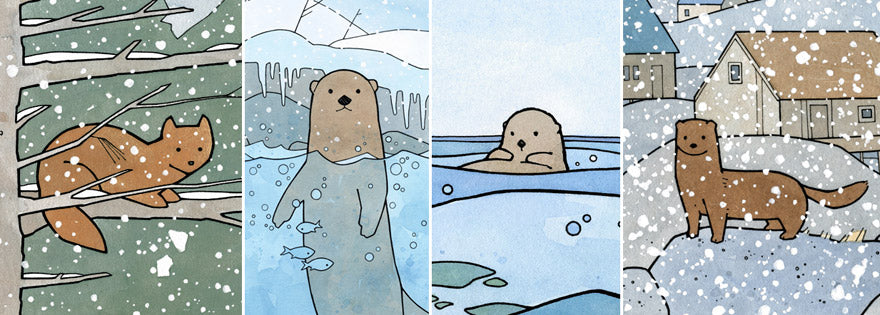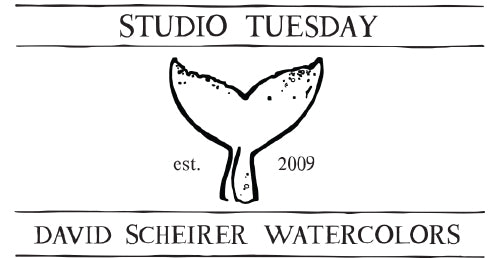Free Shipping within USA
Free Shipping within USA
March 03, 2018
I recently finished this watercolor, inspired by this year's snowy owl irruption (when snowy owls come south from the Arctic in large numbers). During irruptions they can be seen a lot further south than they normally appear, and often turn up on beaches, farms, and airports. Here in Maryland I've been able to watch 2 snowy owls near the Chesapeake Bay where I live.
I painted this Snowy Owl resting in the dunes of the beach, with shells, grasses, and a view of the ocean behind the dunes. I've been experimenting a bit with my illustration process by not using ink (or limiting it). Pretty happy with how this look turned out. 
Detail: a scattering of shells washed up in the tide: clams, moon snails, whelks, razor clams, scallops, mussels, and a skate case.
This is the owl that inspired the painting. I've been watching this snowy owl for the last couple of weeks out on a nearby farm here in Maryland. The dark barring, which I borrowed for my painting, is typical of a first year owl - which are usually the ones that travel south in irruption years.
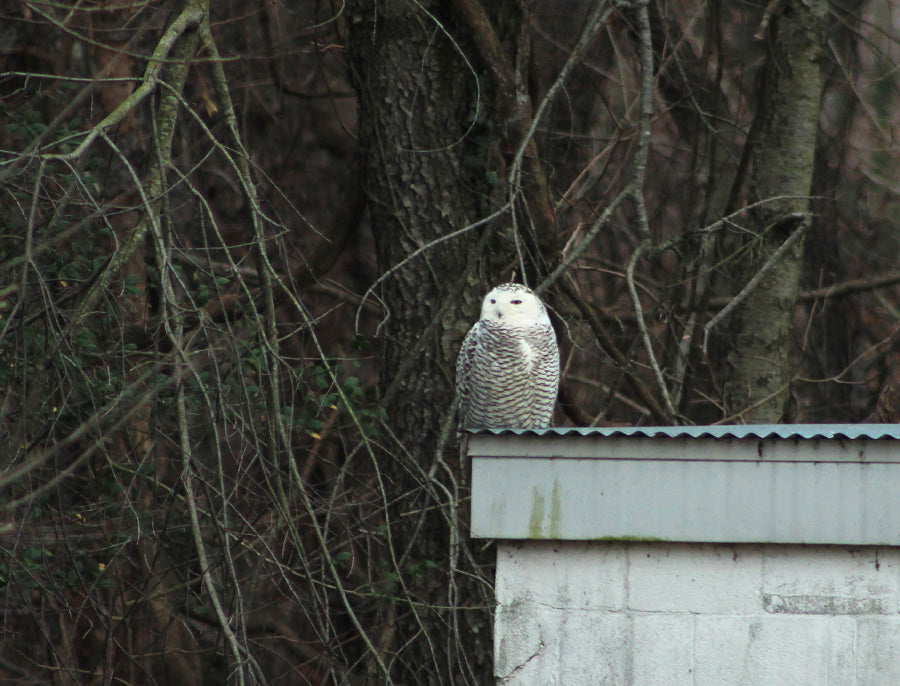
This photo is from when I first found her, on a favorite perch on top of a short pump house. She seemed more feline than bird to me, like a cat sitting on a roof. Feigned indifference, casual looks around and soft slow blinks with half closed eyes.
March 7, 2018 Update:
Lucky to have 2 snowy owls within 10 minutes of my house! This one has been roosting in a nearby marina and I finally got some shots last evening. It starts to get active at dusk and often sits on the boats and masts, getting ready to hunt for the night.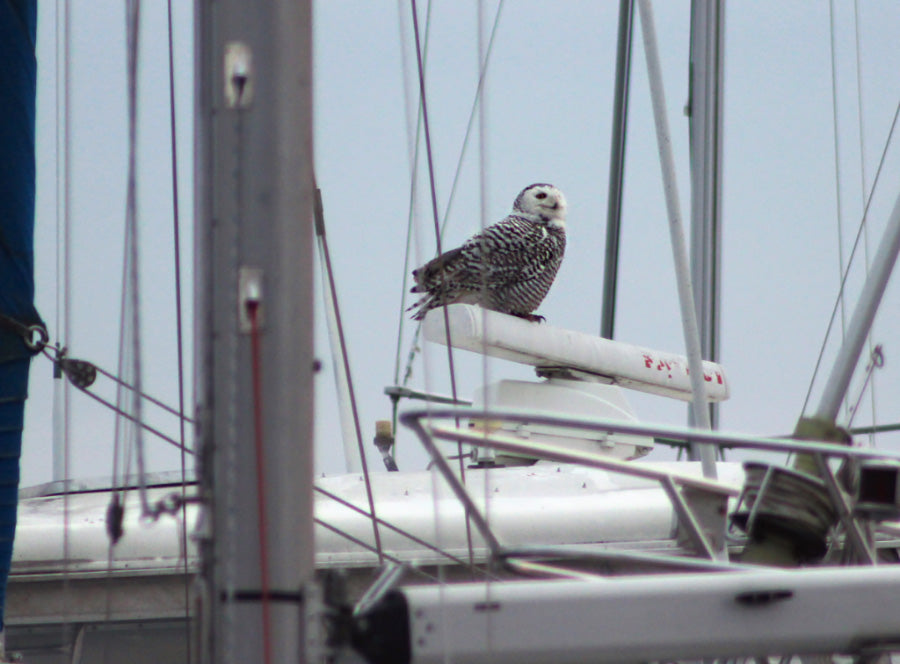
Prints are available in the shop:
https://www.studiotuesday.com/collections/new-in-the-shop/products/snowy-owl-beach-print-watercolor-art-print
April 29, 2017

 I knew from the beginning that I wanted some nice variation in the color of the water throughout this series. While the first illustration was mostly soft blues, I painted this second one with more of a teal color. This is a shallower ocean with some coral reef. Lots of fish (jacks, butterflyfish, tangs) add bright pops of color of yellow, green, and blue. A hammerhead shark and pilot fish are the focal point. I snuck in another spotted eagle ray and a tiny clownfish.
I knew from the beginning that I wanted some nice variation in the color of the water throughout this series. While the first illustration was mostly soft blues, I painted this second one with more of a teal color. This is a shallower ocean with some coral reef. Lots of fish (jacks, butterflyfish, tangs) add bright pops of color of yellow, green, and blue. A hammerhead shark and pilot fish are the focal point. I snuck in another spotted eagle ray and a tiny clownfish. The third illustration is another underwater reef scene. This one with a large sea turtle and a lot of orange fish. Some fun details in this one include a spiny puffer fish (uninflated) and a trumpetfish.
The third illustration is another underwater reef scene. This one with a large sea turtle and a lot of orange fish. Some fun details in this one include a spiny puffer fish (uninflated) and a trumpetfish.April 09, 2017


February 24, 2017
Polar bears live on the ice covered seas of the Arctic and are specially adapted to survive in the extreme conditions there. Winter temperatures can drop to -50 F! They have a lot of interesting features that help them thrive in this harsh wilderness of ice.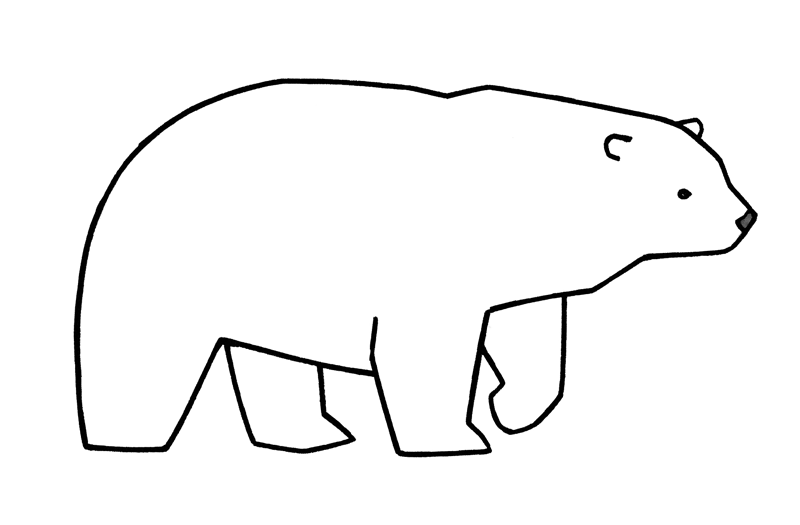

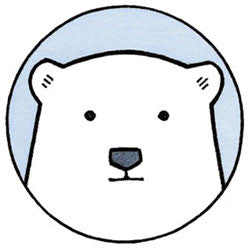
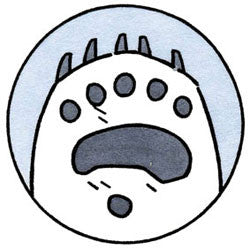
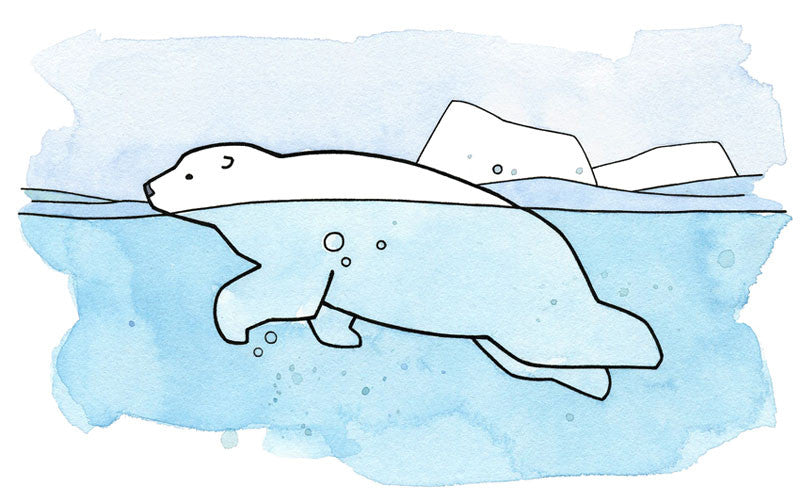
Polar bears are excellent swimmers. With powerful arms and shoulders and a streamlined shape they can swim great distances and are quite at home in the water.

Polar bear cubs are born in the Winter months, November through January. They are born in snow dens. The mother digs the den in October and then hibernates. Often two cubs are born, but the size of a litter can range from 1 to 3 cubs. Polar bear cubs weigh around 1 pound at birth.
Cubs and mother emerge from their den in the Spring. The cubs stay with their mother about 2 years, sometimes into a third year, while she teaches them how to hunt, swim, dig, find shelter, and all the other important skills necessary to survive.
Polar bears are so protected from the cold that they can easily overheat. It takes a lot of energy for them to move fast so they usually amble along in a distinctive, easy pace. They can sprint up to 40 mph for short periods of time.
They prefer to ambush their prey from a still position, which is most often seals. They commonly hunt for seals by waiting by breathing holes in the sea ice.
Polar bears of the most carnivorous of the bears. They mostly rely on seal blubber. They also eat kelp, grasses, belugas, walruses, carrion (such as beached whales), lemmings, eggs, and will scavenge for garbage if nearby towns.
Unlike other bears, polar bears do not hibernate - they hunt year round (with the exception of pregnant females).
Sources
Alaska Wilderness League
North American Bear Center
Polar Bears International
National Wildlife Federation
National Geographic News
Great Bear Almanac by Gary Brown
Read More Illustrated Animal Facts
Polar Bear art prints and cards in the shop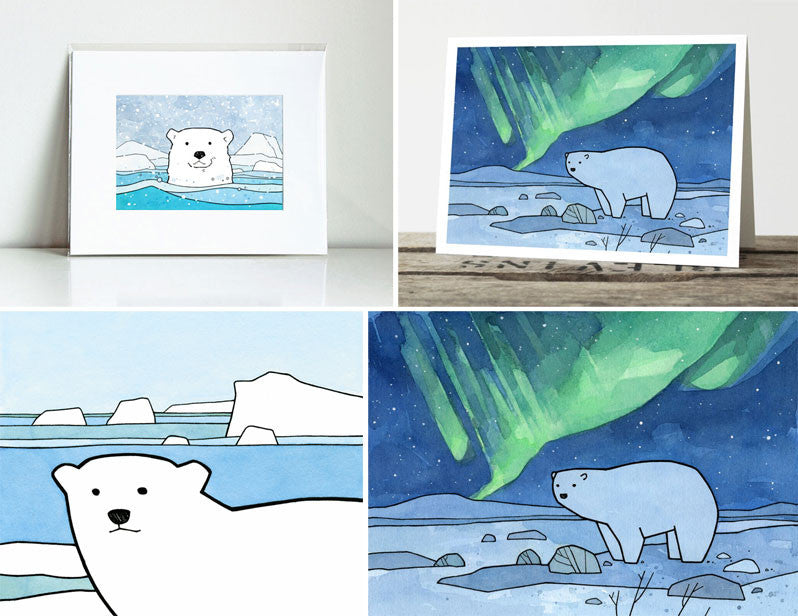
Save
February 02, 2017

Detail: a baby monkey soaking in the water next to it's mother.
Japanese snow monkeys, or Japanese macaques, live in groups called troops, which are organized in a complex hierarchy, each monkey has it's rank in the troop.
If your interested in more I recommend watching PBS's NATURE snow monkeys documentary. It follows a troop of monkeys throughout the seasons of a year, in particular focusing on the unlikely relationship between a grumpy alpha male and a playful youngster.
"Their leader is still new to the job and something of a solitary grouch. But one little monkey, innocently unaware of his own lowly social rank, reaches out to this lonely leader, forming a bond with him that manages over time to warm his less than sunny disposition. It is a rare and remarkable gesture that alters both their lives."
I watched it on Netflix. You can find more info on the PBS website.
Prints are available in the shop!
January 27, 2017




November 14, 2016
 SaveSave
SaveSave
November 08, 2016
 Cards are available as singles and boxes of 10. Printed on sturdy card stock. A blank inside for your message - a whimsical animal Christmas card or note card for other occasions.
Cards are available as singles and boxes of 10. Printed on sturdy card stock. A blank inside for your message - a whimsical animal Christmas card or note card for other occasions.November 05, 2016
A moose in a little pine forest with falling snow.
I really enjoy coming up with little scenes that spark the imagination, of both kids and adults I hope! Fun details in this one include short little pine trees under the moose and a gap in the trees - revealing a hint of water and the far shoreline. A soft Winter color palette with a range of different greens.
One of several new illustrations I've done recently for the upcoming holidays. Every year I illustrate a few new Christmas cards, it's always a lot of fun to think up new snowy Winter scenes and the animals that live in them. 
Prints, cards, and card sets now available in the shop!
SaveSave
October 23, 2016

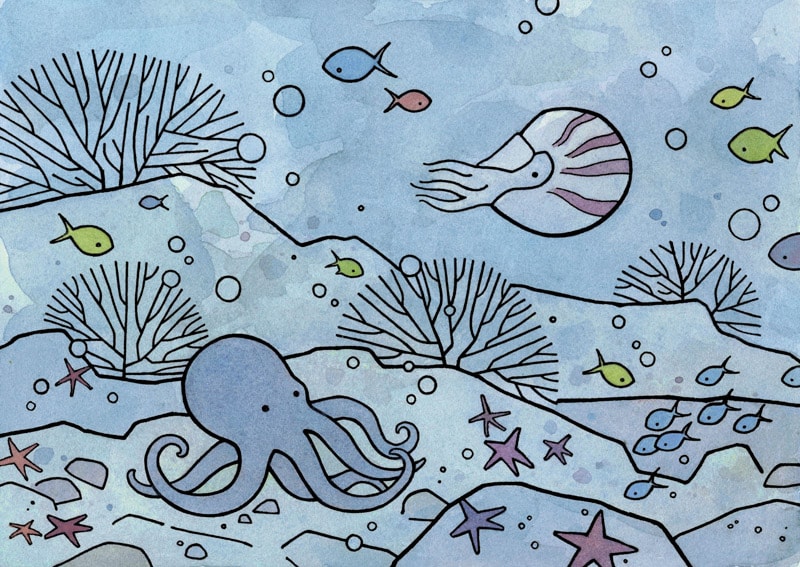

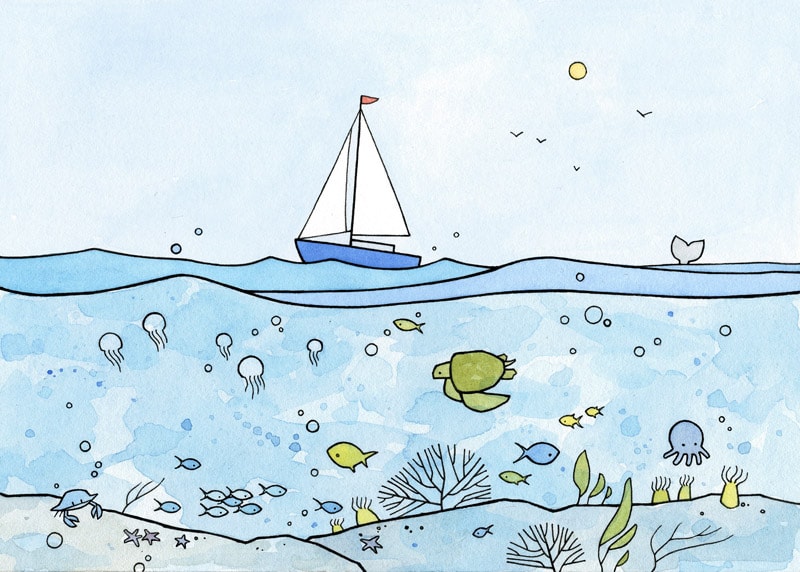
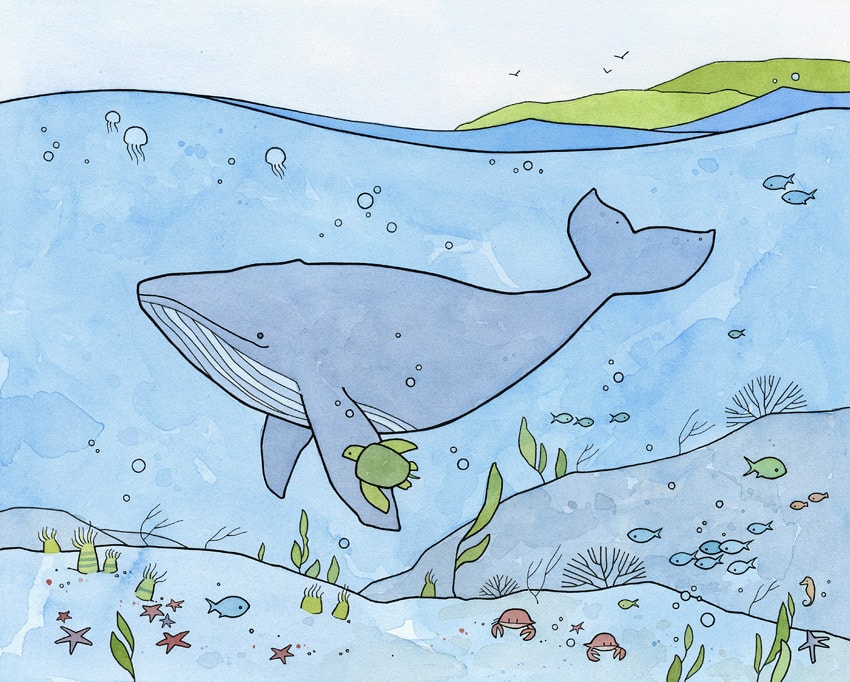
October 10, 2016
Weasels are small mammals with long slender bodies and necks, short legs, a small head, sharp teeth and claws. They have keen senses and are quick, agile, skilled hunters.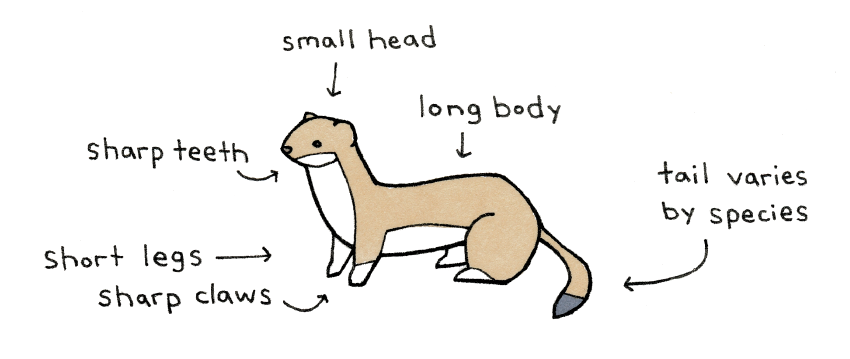
Their small size and body shape allow them to follow mice and other prey right into their burrows.
Weasels are one of the few animals that will kill more than it can eat. It will store the extra in burrows and will eat this excess if it can't find fresh food.
The weasel's body shape is efficient for hunting, but isn't the best for conserving energy or staying warm, which is why they will always kill prey if able (even if they just ate). Their metabolism is so high they can eat up to a 1/3 of their body weight in a day.
Weasels mostly eat mice and other small rodents, but will also eat eggs, berries, birds, and animals much larger than themselves like rabbits.
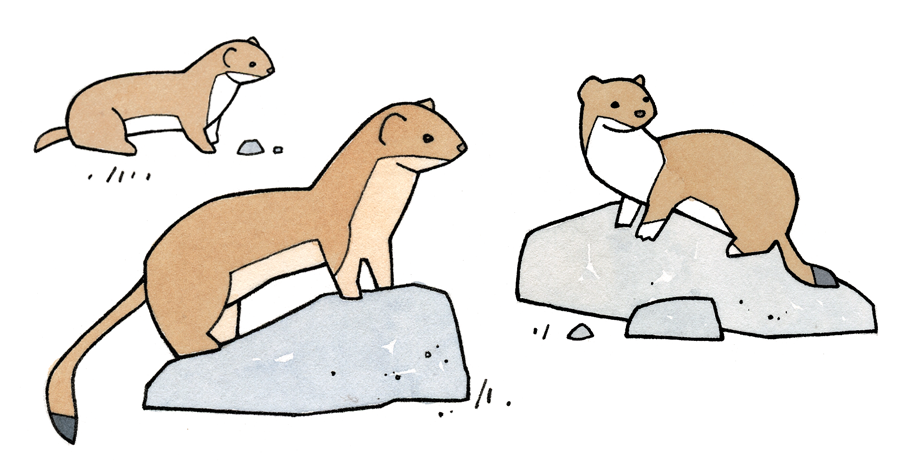
From left to right: Least weasel, Long-tailed weasel, and Short-tailed weasel
These are the three weasel species that live in North America (they are found on other continents as well).
Least Weasel
The smallest weasel. Brown above, white underneath, Short all brown tail
Size: About 6-9 inches (males larger than females)
Range: Throughout much of the northern hemisphere: North America, Europe, and Asia
Short-tailed Weasel
Also called a Stoat or Ermine. Brown with white underneath / white feet. Black tip on tail.
Size: About 7-12 inches (males roughly twice the size of females)
Range: Northern hemisphere in North America, Europe, North Africa, and Asia
Long-tailed Weasel
Brown with white or tan underneath. Long tail with black tip.
Size: About 11-16 inches (males larger than females)
Range: Americas: from southern Canada, US, and Mexico through Central America into parts of northern South America.

All North American weasels turn white in northern ranges. The white Winter coat helps them camouflage in the snow from both prey and predators. Weasels in the southern ranges stay brown all year long.
The change is color is triggered by length of day (not temperature).
The short-tailed and long-tailed weasels keep the black tip on their tail during the Winter. It can help them distract and escape from predators. Hawks and other predators will focus on and try to grab the black tip, making it easier for the weasel to get away.
Weasels don't hibernate, they will hunt above and under the snow during the Winter.
Above: Ermine / Short-tailed weasel has a brown coat in the spring, summer, and fall. It turns white in the winter (tail tip stays black).
Baby weasels are called kits or kittens.
Weasels stomp their feet when annoyed. (Skunks do the same as a warning before spraying.)
Weasels exhibit a behavior known by some as the "weasel war dance". They excitedly dash around, flop, and jump about. It's not exactly clear why they do this. They could be distracting their prey until they are close enough, or maybe they are just really excited.
The weasel family (Mustelids) are a large and diverse group that includes over 50 species. It includes otters, minks, pine martens, fishers, wolverines, ferrets, polecats, and badgers. It formerly included skunks, but new testing puts them in their own separate family. Although mongooses have a similar body shape they are not closely related to weasels.